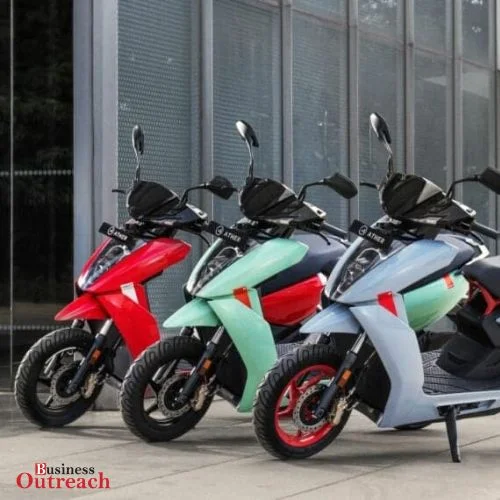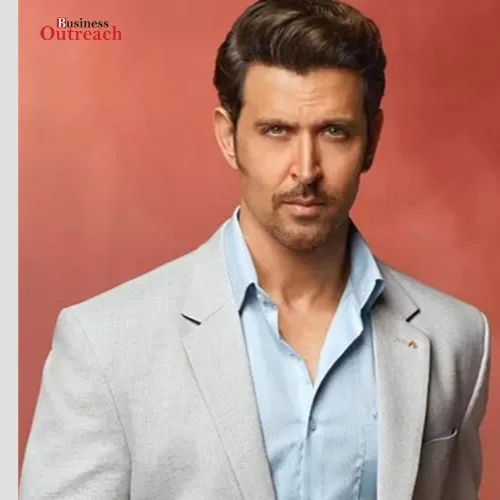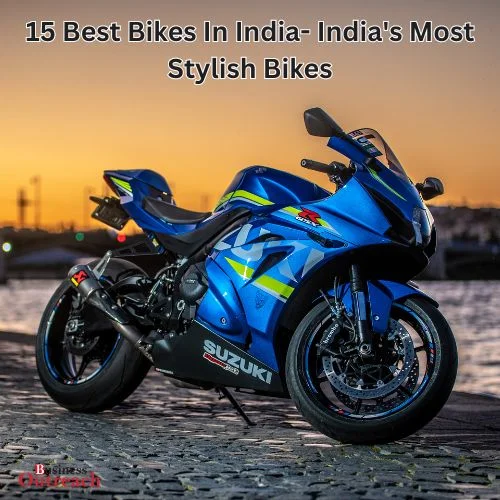The world of high fashion and luxury speaks on itself; one name comes to the very top in the list of brands-only Louis Vuitton, the personification of elegance and magnificent craftsmanship. Bearing the name of the legendary designer Louis Vuitton, this distinct brand was established in 1854, and it is widely acknowledged for redefining luxury, leading to s time-spanning legacy that to this day persist and still continues to mesmerize the hearts of fashionistas from all over the world.
Louis Vuitton: Company Highlights
| Category | Details |
| Company type | Subsidiary (SAS) |
| Industry | Fashion |
| Founded | 1854; 170 years ago |
| Paris, France | |
| Founder | Louis Vuitton |
| Headquarters | 2 Rue du Pont Neuf |
| 75001 Paris | |
| France | |
| Key people | Pietro Beccari (Chairman, CEO) |
| Delphine Arnault (Vice President) | |
| Nicolas Ghesquière (Creative Director, Women’s) | |
| Pharrell Williams (Creative Director, Men’s) | |
| Products | Handbags, accessories, ready-to-wear, shoes, |
| watches, jewellery | |
| Parent | LVMH |
| Website | louisvuitton.com |
Louis Vuitton: Early Life
The Parisian born Louis Vuitton, the eminent French entrepreneur, appeared on August the fourth 1821 in the Jura region of East France. Xavier Vuitton was his father, and his mother Corps Gaillard, who earned a living from the walking on a farm, only the issue was a milliner. Nicolas Vuitton, one of the most prominent and successful French entrepreneurs of his time, had a quite common childhood despite the fact that at the age of 10 he endured a severe drama, the death of his mother.
At the age of 13, young Vuitton got hold of an urge to embark on a voyage to Paris, one of the smallest but at the same time one of the biggest cities of that time. It was curious to see what the destiny had prepared for him there. Though his first journey began as a wanderer and a pedestrian during the late winter of 1835, he managed to hike over two years. He did random jobs wherever he could to pay his bills and rest whenever he had a chance.
The path to Paris that stood ahead of Vuitton was not glossy with a fancy carpet and he needed great grit of mind to undergo that existing endeavor. Finally, after 292-mile walking from his village Anchay to Paris, he was embraced by a new scenario where he experienced several challenges but also obtained friendships and the opportunity to study.
Louis Vuitton: Re-Inventing Luxury Travel
Innovatively, Louis Vuitton installed flat-tract dresses made of trianonic canvas for the first time as it was cheap as to weight combined with airtight functionality. The young man worked in a store as a seller of trunks according to the orders and, thus, gained great experience to delve into the nature of consumer preferences for trunk making.
In grey canvas, with Vuitton’s flat-topped trunks Trianon was in demand, as well as in the trips when people were less likely to lose or damage their possessions being closely stacked in the trunks.
Often addressing the top and wealthy clients, the brand continued concentrating on its maintenance of the production of a luxury product giving it the mark of a high quality and making it refined in its finished craft.
Being the founder of Louis Vuitton, a famous closed suitcase artisan, he established his brand in 1854, France, with the ultimate purpose of manufacturing luxurious products which differ in design and quality. The resulting reputation of excellence, in turn, saw Nüsslein get many distinguished commissions, including designing most regalia of the French Emperor Napoleon III’s wife.
Louis Vuitton shifted its position one level further by introducing what we know today as the LV monogram to his suitcases in 1896, a pattern, which then became probably the most easily recognizable in the world. The firm had been a real player in Paris exhibitions, which tabooed clone products by amending their models. The original Vuitton sign was printed on the Damier Canvas introduced in 1888 to stamp out imitation. The logo—”Marque L. Vuitton déposée”—translated into “L.Vuitton registered the trademark.”
Throughout the years Louis Vuitton never has stopped to be a key factor of the global fashion showing in the world opening new age bag models including Speedy Bag and the Neverfull Tote. In ’97, Nike decided to diversify its line and added in women’s clothes. Then in ’00 Nike proceeded to widen out even more and so now it has seeped into men’s fashion.
Currently, today, Louis Vuitton has turned into a billion-dollar multinational organization offering an array of products which consists specifically, not only bags but also attire, shoes, timepieces, jewellery, accessories and so on. The brand’s victory is a moving evidence of the brand’s persistent efforts at producing superior and creative goods.
Louis Vuitton: Brands and Intellectual Properties Regard
Louis Vuitton, which makes no secret of the unique LV icon and monogram, takes a top spot among other world’s highly valued and appreciated brands. The brand, as of a 2010 study by Millward Brown, has reached the 19th most valuable brand world ranking position according to combined estimation of US$19 billion value.
Subsequently, in the 2011 Brand study by Millward Brown Optimor, Louis Vuitton secured the top position for six consecutive years with a value of $24.3 billion, more than double that of the second-ranking brand.
The brand’s prominence has, however, attracted challenges in the form of counterfeiting, a consequence of its status as a symbol of affluence. Ironically, the Monogram Canvas, a signature creation, was introduced to deter counterfeiting. In 2004, Louis Vuitton counterfeit items represented 18% of seized accessories in the European Union.
Proactively combating counterfeiting, the company invests significantly in legal measures, employing a dedicated team of lawyers and investigators globally. Approximately half of its communications budget is allocated to combat counterfeit goods. LVMH, Louis Vuitton’s parent company, emphasizes a robust anti-counterfeiting initiative involving 60 individuals at various levels of responsibility, collaborating with external investigators and legal experts.
Louis Vuitton’s distribution strategy has evolved, with products now primarily available at company-owned boutiques, both offline and through an official online store.
The company maintains stringent control over product distribution, a departure from its earlier presence in department stores.
In legal matters, Louis Vuitton has been involved in cases to protect its intellectual property rights. Notably, a lawsuit was filed against Manifest Information Services Ltd. in 2006 to acquire the domain name LV.com, although the legal action was unsuccessful.
The brand has also encountered legal disputes related to artistic freedom and freedom of expression. In 2007, a cease-and-desist order was issued to Danish art student Nadia Plesner for an allegedly infringing illustration titled “Simple Living.” Despite legal proceedings, the court in The Hague eventually ruled in favor of Plesner’s right to freedom of expression in May 2011.
In efforts to combat counterfeiting, Louis Vuitton sued Britney Spears in 2007 for a music video that featured what appeared to be a Louis Vuitton design. Although Spears was not held liable, Sony BMG and MTV Online were fined for showing the video.
Additionally, Louis Vuitton has pursued legal action against small retail shops in Hong Kong for alleged violations of its intellectual property rights, seeking compensation and apologies for perceived infringements.
In a 2021 patent office case in Japan, Louis Vuitton lost against a Japanese manufacturer using centuries-old Japanese designs that had inspired the brand. The case raised discussions on social media about the origins of Louis Vuitton’s designs, drawing attention to similarities with historical Japanese patterns and artifacts.
Louis Vuitton: Strategic Partnerships and Collaborations
Louis Vuitton has forged numerous collaborations with esteemed artists and designers, underscoring the brand’s commitment to innovation and artistic expression.
Renowned artist Takashi Murakami has played a pivotal role in this creative alliance. His special edition collections, including the groundbreaking Monogramouflage Collection in 2008 and a prior release in 2002, showcased his distinctive artwork “painted” over the traditional monogram canvas. This avant-garde approach injected a radical twist into the timeless design.
Another notable collaboration involved Marc Jacobs commemorating a previous venture designed by Stephen Sprouse in 2001. The collection, characterized by bold graffiti-like prints over the traditional canvas, was reimagined in 2009 with vibrant hues such as hot pink, neon green, and orange, which also possessed a glow-in-the-dark feature.
In 2009, Louis Vuitton joined forces with Kanye West, resulting in the creation of a limited run of shoes designed by the music icon.
Further enriching its collaborative portfolio, Louis Vuitton partnered with Yayoi Kusama in July 2012 to craft the “Infinitely Kusama” Collection. This collection featured bold colored dots over vernis leather or the monogram canvas, offering variations in black with white dots, red with white dots, and yellow with black dots.
The brand’s Spring–Summer 2016 collection advertising campaign saw an exciting collaboration with the popular Japanese video game franchise Final Fantasy, featuring the game’s main heroine, Lightning.
A particularly noteworthy partnership transpired in 2017 when Louis Vuitton collaborated with American streetwear brand Supreme, resulting in products featuring a fusion of the Louis Vuitton monogram canvas and the iconic Supreme box-logo design.
In the same year, the brand collaborated with acclaimed artist Jeff Koons for two collections, exploring the intersection of fashion and art.
The exploration of artistic intersections continued in 2018 when Nicolas Ghesquiere collaborated with Vogue creative director Grace Coddington on a cat-themed “Catogram” collection.
In June 2019, Louis Vuitton embarked on a collaboration with six contemporary artists—Sam Falls, Urs Fischer, Nicholas Hlobo, Alex Israel, Tschabalala Self, and Jonas Wood—for the “Artycapucines” project, where each artist designed a limited edition of the Capucine bag.
A testament to its commitment to showcasing collaborative achievements, Louis Vuitton opened the temporary exhibition “Louis Vuitton X” in Los Angeles in July 2019, displaying items from various collaborations over the years.
In October 2019, the brand partnered with Riot Games to create digital assets for the “True Damage” skin line in League of Legends, featuring the unmistakable LV logo on Qiyana.
Noteworthy collaborations in subsequent years included a June 2020 partnership with Japanese designer Nigo for the Nigo x Virgil Abloh capsule collection and the October 2020 transformation of the La Samaritaine department store by Nicolas Ghesquière for the Women’s Spring-Summer 2021 fashion show, featuring a virtual runway with 360-degree views and socially distanced seating for guests.
Louis Vuitton : Brand Net Worth
Louis Vuitton, renowned for its upscale merchandise, has garnered increasing acclaim over time. Operating across more than 50 countries with a global presence of over 460 stores, the brand secured the title of the world’s most valuable luxury brand for six consecutive years (2006-2012). According to Forbes, in 2018, Louis Vuitton claimed the 15th position among the world’s most valuable brands, boasting a brand value of $33.6 billion.
In terms of financial performance, Louis Vuitton reports an estimated annual revenue of $12 billion. The brand faces competition from notable counterparts such as Hermès International, Gucci, and Tiffany & Co. Moreover, as part of its strategic investments, Louis Vuitton entered into a significant partnership with YG Entertainment on August 21, 2014. This post-IPO equity investment in YG Entertainment was valued at $80 million, showcasing the brand’s commitment to strategic business ventures.
Louis Vuitton’s Handcrafted Trunks and Iconic Bags in Contemporary Fashion
Since the 19th century, Louis Vuitton trunks have been meticulously crafted by hand, as showcased in Contemporary Fashion. Skilled artisans align the leather and canvas, meticulously affixing tiny nails and securing the solid, pick-proof brass locks with individually handmade keys.
These keys are ingeniously designed to provide the traveler with a single key for all luggage. The wooden frames of each trunk consist of 30-year-old poplar that undergoes a minimum four-year drying process. Each trunk is assigned a unique serial number and requires up to 60 hours of craftsmanship, with suitcases demanding as much as 15 hours.
Louis Vuitton’s iconic bags include the 1930 Speedy bag and the 2007 Neverfull bags, both marking highly successful handbag launches. Fashioned for both style and practicality,
These bags are available in three sizes: Petit Modele, Moyene Modele, and Grand Modele.
The brand periodically introduces rare, limited edition bags, typically accessible through reservations at select Louis Vuitton stores.
The company often uses brown Damier and Monogram Canvas materials, first introduced in the late 1800s, with the LV initials on all its products. Louis Vuitton sells its stuff in its own stores worldwide to control quality and prices and prevent fake copies. They also sell items on their official website, LouisVuitton.com.
In June 2021, Louis Vuitton faced trouble with the ‘Monogram Keffieh,’ a $700 scarf. They changed the traditional black and white keffiyeh, a symbol of Palestinian nationalism, to blue and white, resembling the Israeli flag. This upset Palestinians and pro-Palestine activists, who criticized Louis Vuitton.
On social media, people shared memes and comments, expressing dissatisfaction and accusing the brand of making money from the keffiyeh while staying neutral on the Israel-Palestine issue.
In 2017, the brand caused controversy by using prints resembling Basotho blankets and Thabo Makhetha-Kwinana designs in a men’s collection. This led to accusations of cultural appropriation in South Africa and Lesotho.
Conclusion
In Conclusion, Louis Vuitton is a famous brand known for high fashion and luxury, showcasing elegance and excellent craftsmanship. The brand’s story started with Louis Vuitton’s determination, who, after a tough journey to Paris, laid the foundation for a legacy that continues to attract fashion enthusiasts worldwide.















